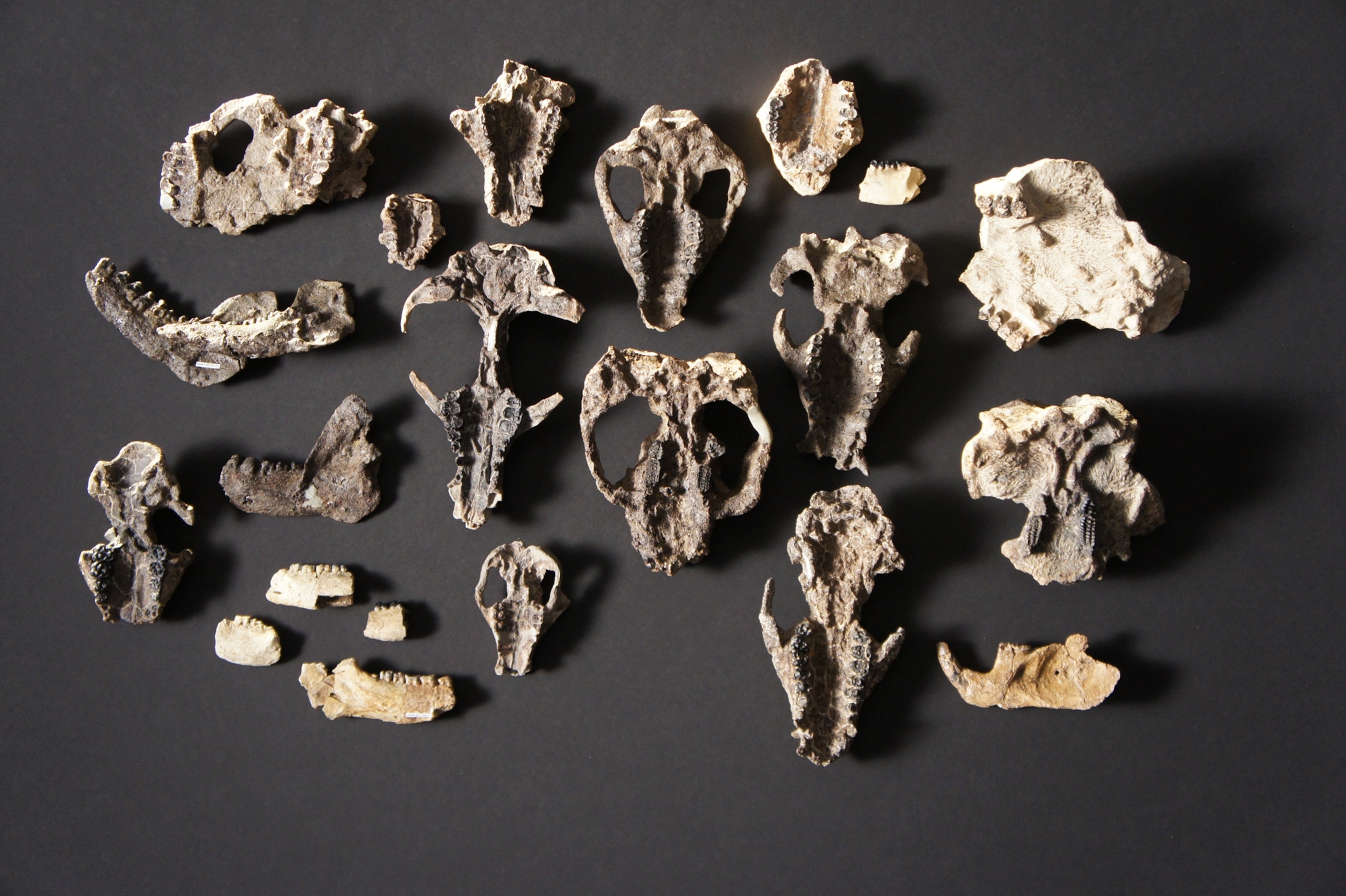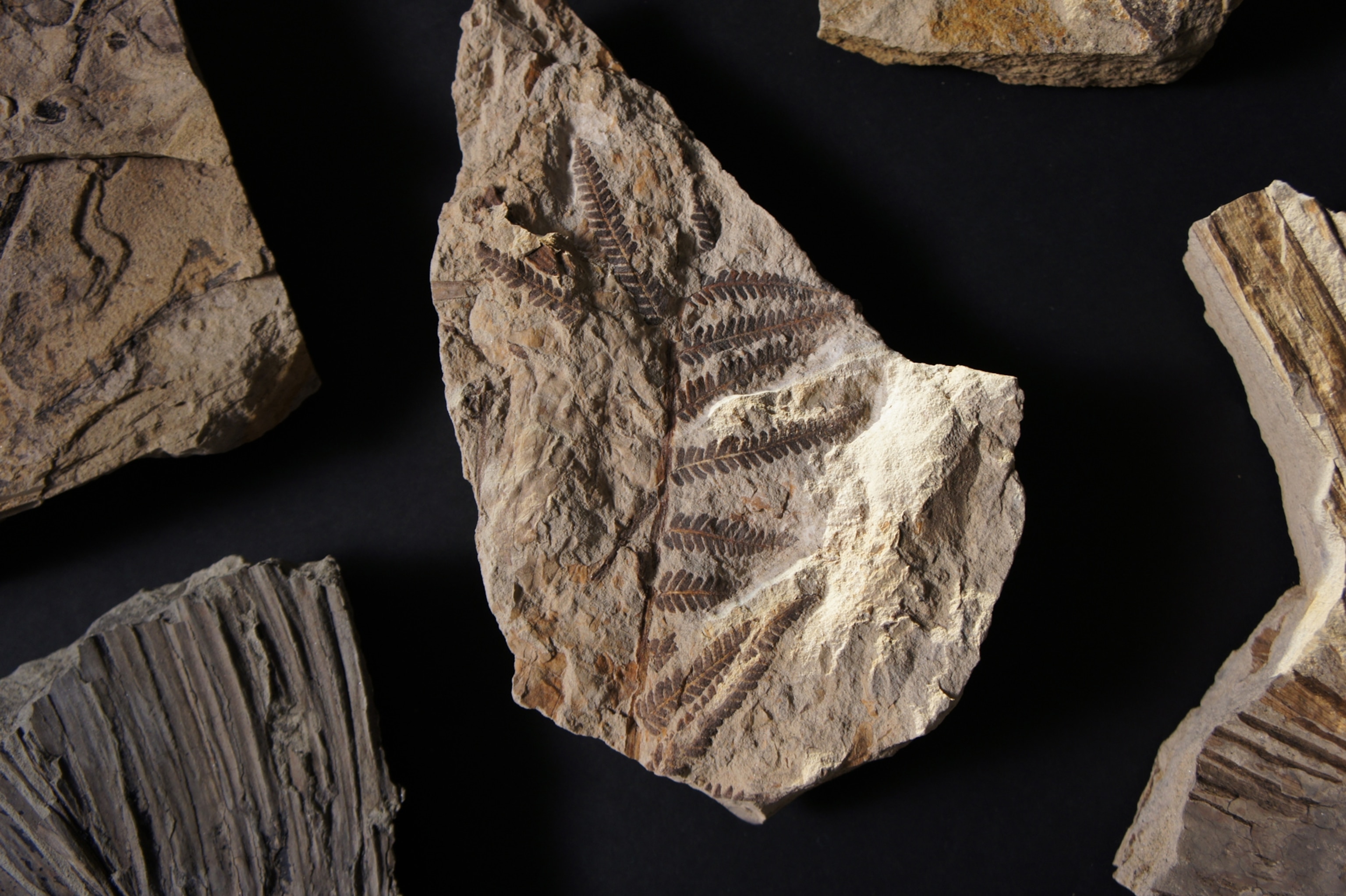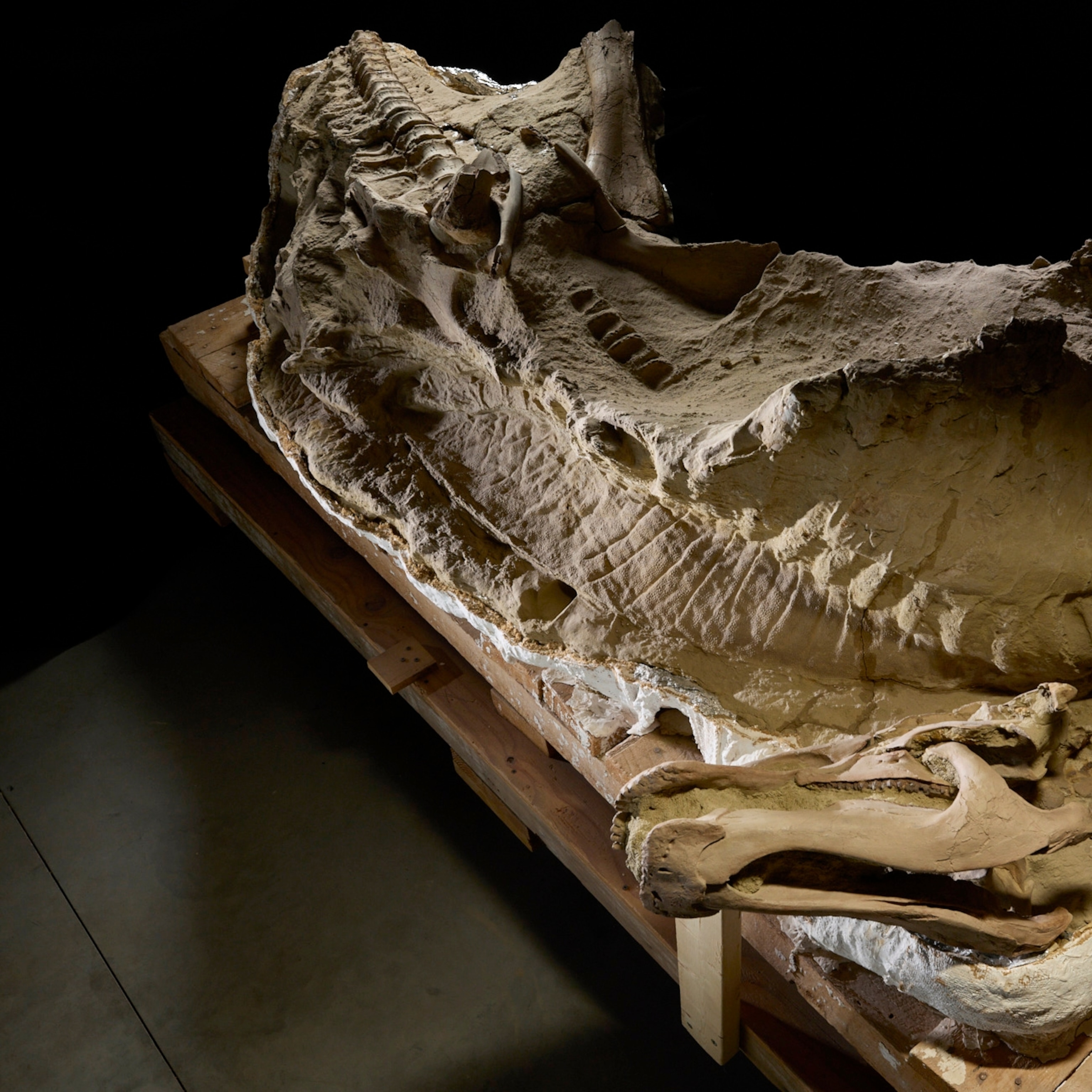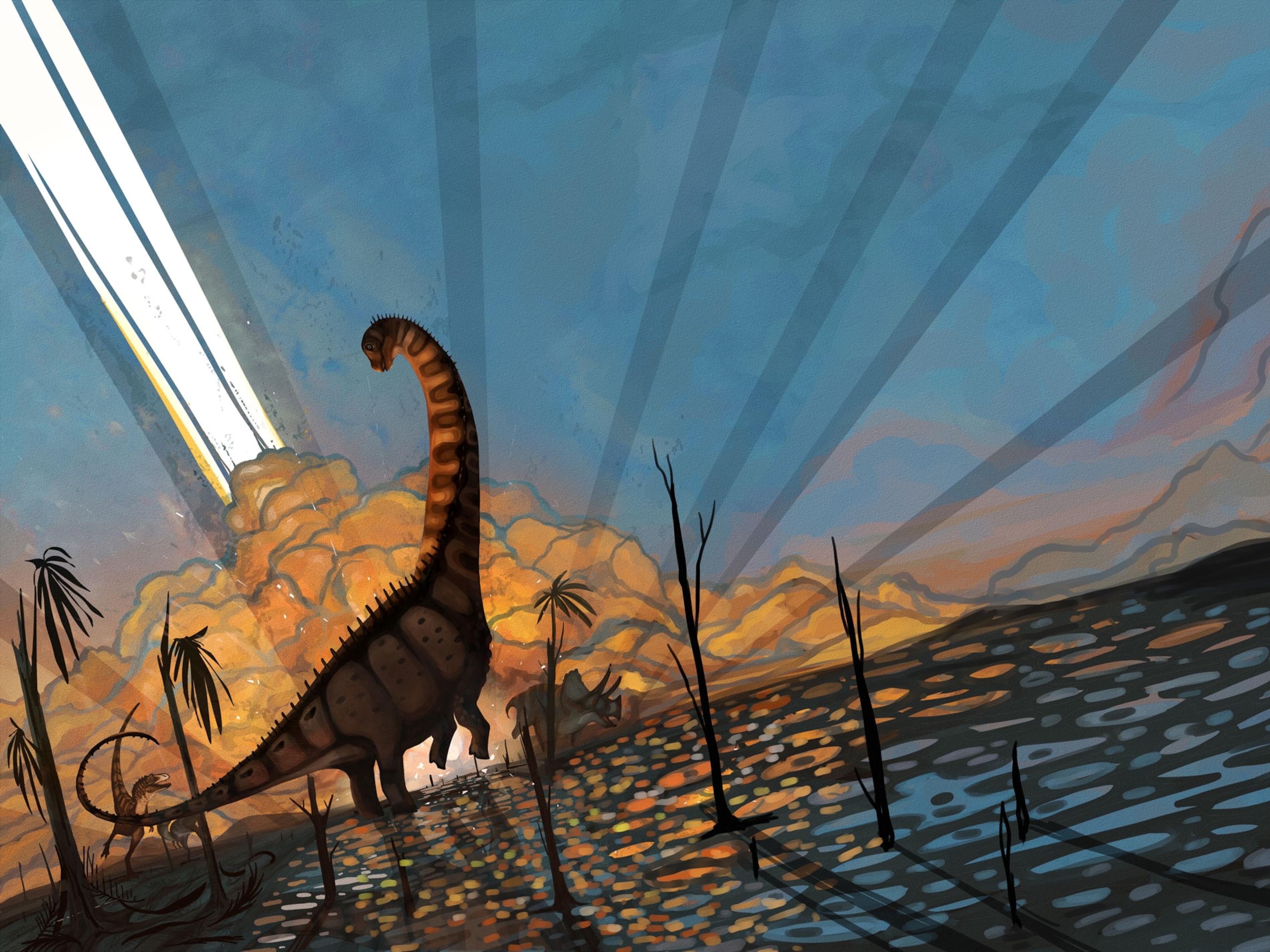Hundreds of fossils found in Colorado offer a snapshot of how life was rebounding in the aftermath of the mass extinction that ended the age of dinosaurs, paleontologists report today. The discovery includes the exceptionally preserved remains of at least 16 mammal species, as well as many turtles, crocodilians, and plants, that lived in the first million years after the global devastation.
The sudden disappearance of many fossil species shows that life on Earth took a big hit after a large asteroid struck Earth 66 million years ago. Roughly three-quarters of all species went extinct in the aftermath, including almost all the dinosaurs that had dominated the planet.
I split open a concretion and saw a mammal skull smiling back at me.Tyler Lyson, Denver Museum of Nature and Science
To the frustration of many paleontologists, however, life in the period immediately following the extinction event has been very poorly documented in the fossil record—until now. (See how scientists have reconstructed events on the final day of the dinosaurs’ reign.)
Described today in the journal Science, the new fossil bonanza is already revealing some key details about how life made a comeback. That includes new insight into the stunning growth spurt mammals experienced in the first 300,000 years after the catastrophe.
Skull in a rock
The key to this treasure trove was a way of looking for fossils that study coauthor Tyler Lyson, a paleontologist at the Denver Museum of Nature and Science, learned from a South African colleague. In the wind-swept plains of western North America, fossil hunters often rely on finding bones weathering out of the ground. But paleontologists can also search for concretions, or rocks that form around cores of ancient bone.
Once they started paying attention to these rocks, Lyson and his coauthor Ian Miller, a paleobotanist at the Denver museum, soon struck gold at a site called Corral Bluffs, an outcrop in the Denver Basin, just east of Colorado Springs, where they had previously found nothing.
“I split open a concretion and saw a mammal skull smiling back at me,” Lyson recalls. “And then I looked around and saw concretions just littering the landscape. We found four or five mammal skulls within a few minutes.” (Find out about a fossil site in North Dakota that captures the immediate aftermath of the asteroid strike.)
Back in the lab, one thing that became exquisitely clear is that mammals grew a lot larger in the first million years after the mass extinction.
The biggest mammals that escaped the global die-off weighed no more than a pound. But just 100,000 years later, the largest species among their descendants were about 13 pounds, as heavy as a modern raccoon. And another 200,000 years later, “the largest mammals had again tripled in weight, to about 45 pounds,” Lyson says. That’s about as heavy as an American beaver, and much heavier than any pre-extinction mammals.
This pattern makes a certain amount of sense, since those mammals would no longer have had to compete with—or hide from—hungry dinosaurs. But the accompanying plant fossils from Corral Bluffs reveal a much richer story.

Nuts and beans
During the mass extinction, half of all plant species went extinct. The small mammals that also made it through were probably omnivores with a healthy appetite for insects, as the many ferns that were among the first plants to re-emerge weren’t all that nutritious.
Palm trees reappeared next, but it was probably the diversification of trees from the walnut family that allowed mammals to really outgrow their ancestors; the increase in mammal body weight that happened 300,000 years after the disaster matches the appearance of fossil pollen from this group.
The largest mammal from this time period found in the Denver Basin was Carsioptychus, a remote relative of today’s hoofed mammals.
“Its premolars were very large and flat, with many weird folds, so there has always been speculation they may have fed on hard objects, such as the nuts trees in this family produce,” Lyson says. (Also find out why vegetation may have been a crucial factor in how birds survived the mass extinction.)

About 400,000 years later, another growth spurt gave rise to even larger mammals weighing over a hundred pounds, or about as much as a pronghorn. Their arrival co-occurs with the appearance of fossils from the first representatives of the bean family, including the leaves and protein-rich seed pods sought by many herbivores.
“We were surprised how well everything lines up,” Lyson says.
An analysis of the fossil leaves found at Corral Bluffs also suggests there were three periods of significant warming in the million years after the mass extinction. At least two of those appear to have been linked to these remarkable changes in vegetation that may have preceded the biggest shifts in mammal body size.
“The idea that mammals increased in body size some 300,000 years after [the mass extinction] is not new,” says Jaelyn Eberle, a paleontologist at the University of Colorado Museum of Natural History in Boulder, who was not involved in the study. “But one of the important questions was why, and the correlation this study reveals between body size, floral diversity, and warming takes us closer to understanding this.”
“The main lesson is that we cannot understand extinctions or recovery by looking at one component of the Earth’s system alone,” adds Courtney Sprain, a geochronologist at the University of Florida.
Hoping for birds
David Archibald, a paleontologist at San Diego State University, calls the discoveries truly extraordinary and believes the authors’ conclusions to be spot-on. But he warns that “remarkable as they are, these results are from a limited geographic area. We might be tempted to extend them globally, but that would be premature.”
Increased interest in concretions at fossil sites around the world may help strengthen that case, Lyson says.
“One senior colleague I took out to the field site, who has found a ton of wonderful fossils himself, said, Oh man, this makes me want to go back to all my field areas and do it right,” he recalls. “I do think that if people will be paying more attention to concretions now, we’ll find more at other sites.”
In the meantime, he and his collaborators will be busy for years to come describing some of the new species—including two mammals—that have been identified and looking for fossils in the hundreds of concretions they haven’t even opened yet.
“I’d love to find birds, as this was an important period for them as well,” Lyson says. “Who knows, I may even have them in my office.”









